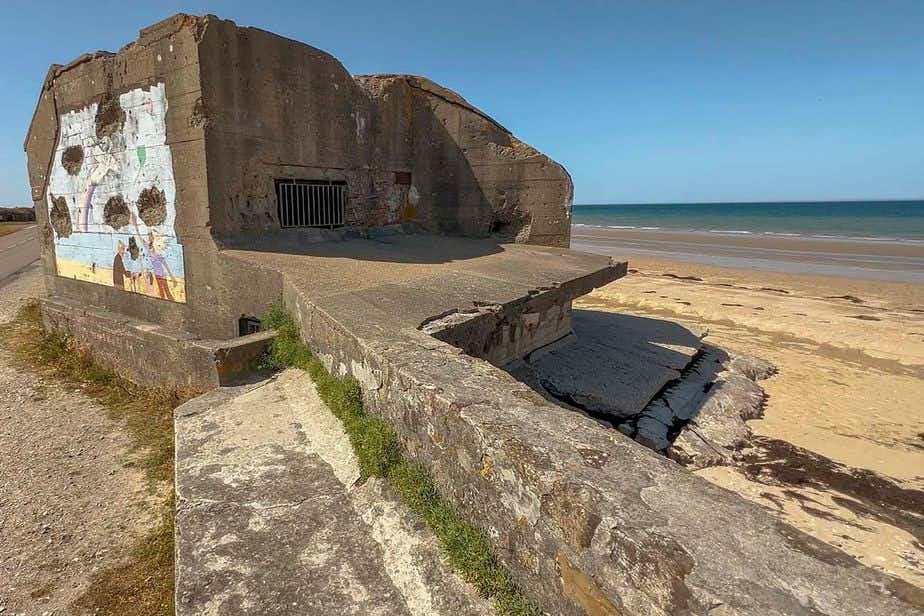Login
No account yet?
Create Account
Utah Beach
One of the Five Landing Zones in Normandy
0 travellers have this on their Bucket List
0 been here
Utah Beach in Normandy was one of the five landing zones during D-Day in the Second World War. The American troops succeeded in quickly gaining a foothold in this part of France. Thanks to this German defence breach, the Allied troops could advance towards the strategic town of Sainte-Mère-Eglise. These are the best highlights of Utah Beach.
The lovely beach is about 5 kilometres long with golden sand. The name was deliberately chosen to confuse the Germans. As the preparation took months, secrecy was of great importance. The American state of Utah has no beaches, so the Germans could only guess which location was meant in all communication.
Nowadays, Utah Beach is one of the most visited D-Day beaches. On your excursion, you can see numerous German bunkers and other remnants of the defensive works.
Jeep Tour to Utah Beach
From Sainte-Mère-Église, you can do this interesting excursion in an authentic jeep. I booked the tour and found it to be one of the most interesting activities to do. In an authentic Willys Jeep, the guide will drive you around the hinterland where a large part of all the battles took place. You will also visit Utah Beach to see where the Allies landed.
Read my article about D-Day Beach Jeep Tour
Utah Beach Landing Museum
This museum is located on the grounds of Utah Beach and provides a profound insight into the events of D-Day. The museum features various exhibitions with artifacts, photos, and personal stories from soldiers. A visit to this museum is intriguing and impressive.
Address: La Madeleine, 50480 Sainte-Marie-du-Mont
Monument of the 4th Infantry Division
This monument pays tribute to the 4th Infantry Division of the US Army. This army division was responsible for the landing on Utah Beach. It is located on the beach itself and is a tribute to the dedication and sacrifice of the soldiers.
D-Day Experience
This interactive museum provides a realistic experience of the Utah Beach invasion. It uses audiovisual presentations, reconstructions, and original equipment to immerse visitors in the history of D-Day.
Address: 2 Vge de l'Amont, 50500 Carentan les Marais
Battery of Crisbecq
The Crisbecq Battery is a former German coastal battery from World War II. Located on the west coast of the Cotentin Peninsula. The battery was part of the Atlantic Wall built by the Germans. It played a strategic role in the defence of the coast against the Allied invasion. It was equipped with heavy artillery to engage enemy ships.
The battery consisted of four large bunkers that served as gun emplacements and command centers. There were also underground casemates, ammunition storage facilities, and other supporting facilities. During the Allied invasion on June 6, 1944, Battery Crisbecq was heavily bombed by Allied ships and aircraft.
Despite the resistance of the German defenders, the battery was finally captured by American troops on June 9, 1944. Current visitors can explore the bunkers, view the gun emplacements, and admire the immense cannons. If you have a guide, you can learn a lot about the history of the battery and the events during the Battle of Normandy.
Address: Isle A1, 1 Rte de Crisbecq, 50310 Saint-Marcouf
Sainte-Mère-Église
This town is heavily linked to D-Day. When you enter the town of Sainte-Mere-Eglise, you see a parachutist hanging from the church tower. It is a reminder of the thousands of parachutists who landed in this area. One actually got stuck on the tower, but was quickly rescued. The town is a base for many people visiting the beaches, the various museums and the beautiful chalk cliffs.
Sainte-Marie-du-Mont
This nearby village was a strategic target for the Allies during the invasion. It still has some interesting sights, such as the historic church and a few old buildings.
Battery of Azeville
The Azeville bunkers (or Batterie d'Azeville) were also part of the Atlantic Wall. This was a defense line along the coastline of Western Europe. They were intended to protect the access to the port of the nearby city of Cherbourg.
You can see various bunkers and defence works, including a command bunker, observation bunkers, machine gun bunkers, and ammunition storage facilities. The bunkers were built with thick concrete walls in order to withstand Allied bombardments.
There is a visitor centre, where visitors can get information about the history of the bunkers and the events during the Second World War. The centre offers exhibitions, educational displays and tours. The bunkers are located in Azeville, a small village near Sainte-Mère-Église.
Address: Lieu-dit, La Rue, 50310 Azeville
More Articles About Normandy
0 travellers have this on their Bucket List
0 been here


